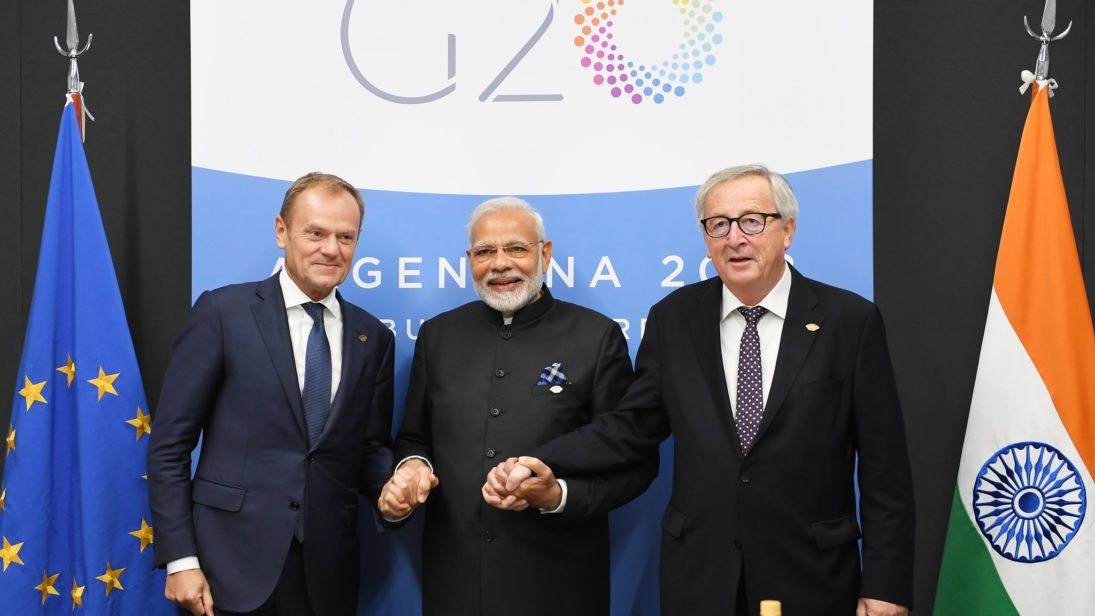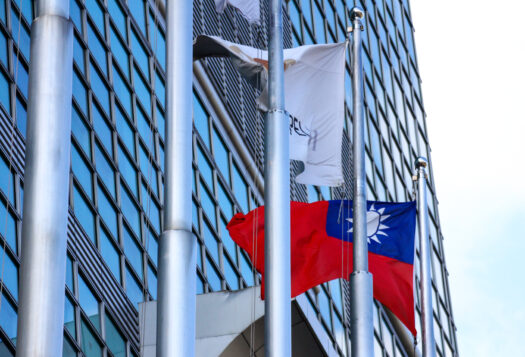
In November 2018, the European Commission released a Joint Communication with the High Representative for Foreign Affairs and Security Policy, Federica Mogherini, outlining the strategy for European Union (EU) engagement with India. For the first time, the European Commission released a communication independently on India, as opposed to an outcome of a conference or meeting as is typical.
This document marks the EU’s shift towards a foreign policy that reflects rising nontraditional security concerns and a keenness to diversify partners in view of a redistribution of global power. It also reflects the EU’s need to establish ties with India even as Brexit looms: when the United Kingdom leaves the EU, the grouping will lose a key member that understands India well given their shared history.
Astronger relationship will benefit both parties in economic terms as well asfrom a geopolitical security perspective. To strengthen the EU-Indiarelationship, however, there is a need for better understanding of the social,cultural, and geopolitical factors that drive each other’s decisionmaking.
A Sluggish History
The Joint Communication, which explicitly recognizes India as “a heavyweight on the Asian continent and an emerging global power”, marks an important transition in EU-India relations, which have been slow-moving and limited primarily to trade. The two are not natural partners, as both have vast cultural, historical, and physical differences in addition to their complex internal and regional landscapes. These intrinsic differences create a void in information and understanding, causing a level of disconnect and mistrust in dealings between the two.
In the decade from 2000 to 2010, countries across the globe looked to engage with India’s newly liberalized and rapidly growing economy. For the EU, this was a period of great upheaval as it dealt with new members, a new currency, and a recession that adversely affected several of its member states. This was one of the key reasons the EU was slow to engage with Indian markets (though individual countries engaged bilaterally). Further, apprehension among some member states regarding India may have influenced decisions to capitalize on the economic opportunity.
Attempts to improve communication in the 2000s achieved limited success. For example, the annual EU-India Summits were cancelled, postponed, or simply did not take place on several occasions. In 2005, the summit was cancelled due to ethnic clashes in the Indian state of Nagaland (although it took place later that year). Again in 2011, 2013, and 2014 the summits were not held. In 2015, official statements were made citing logistical and technical issues having led to a lack of confirmation from the EU side on the dates. (Many speculated, however, the true reason being an unresolved bilateral issue regarding Italian marines detained by the Indian government.) These instances indicate the lack of political will on either side to engage.
On the trade front, engagements have improved since 2010. This could be attributed to India’s transformation into a donor country from an aid-recipient country. Post-independence India had accepted development aid from the World Bank. In the last ten years, however, economic growth has brought the country to a point where it does not require the assistance, and refused it on occasion. By 2010, India was in a position to help other countries seeking assistance, and over the following decade provided more aid than it received. This transformation changed the way in which the West perceived India: from a needy developing nation to somewhat of an equal partner. As a result, by 2017 the EU grew to become India’s largest trading partner accounting for 13.1% of India’s total trade.

Shared Benefits and SharedConcerns
Trade and economic benefits are some positive outcomes that could be achieved from a stronger EU-India relationship. The proposed EU-India Free Trade Agreement (FTA) has the potential to transform trade relations, but reaching a formal agreement has proven to be difficult. For example, the EU is pressing India to adopt standards of Intellectual Property (IP) rights that go further than those agreed by both at the World Trade Organization (WTO). Agreeing to the stricter norms could potentially be harmful for India in the context of health care, where it might threaten access to affordable generic drugs.
Even as progress on trade stalls, there remains untapped potential in a mutually beneficial security partnership. With the shift in traditional centers of power – Russia and China on the rise and an unpredictable United States under the Trump administration – the EU could use a stable and reliable partner in Asia to balance against these rising powers. For years, Europe’s focus in Asia was largely on China. However, the limited information about and subtle strategic undercurrents to China’s economic expansion in Eurasia have raised concerns, with some EU member states questioning the burden of the investment and implications for future security.
India too has voiced its concerns regarding Chinese initiatives such as the Belt and Road Initiative (BRI). Further, it could use a strategic relationship aside from the capricious United States. For some time now, India has shown a keenness to diversify its partners, especially with Europe. Indian Prime Minister Narendra Modi visited Sweden (in 2018) and Spain (in 2017) – for the first time in 30 years. This along with India’s participation in the first India-Nordic Summit indicates a keenness to engage with a wider section of the EU on a more strategic level.
Together, India and the EU could make progress towards confronting shared security concerns regarding China’s growing naval fleet in the Indian Ocean. Ensuring maritime security is a priority as a large portion of EU exports are transported by sea through the Indian Ocean. Further several ports in the EU are now being controlled by the China Ocean Shipping Company (COSCO), and the EU has voiced concern over the foreign acquisition of strategic assets. The Joint Communication identifies working with India “to help build the capacity of maritime nations in the Indian Ocean”. There has been some progress towards reaching this goal. For example, a workshop was held in February 2019 where experts and senior officials from both sides came together to improve common understanding.
Obstacles to the WayForward
In the EU and India, there is an understanding of the common issues and concerns that should make them natural allies in this new world order. Yet the lack of information about one another seems to be a weakness in the EU-India relationship. The EU is a large and complicated organization with areas of disconnect between its member states. Take, for instance, the differing opinions regarding the BRI that affect EU decisions regarding China: Hungary has softened its stance on China’s human rights record, while German Chancellor Merkel has gone on record to say that Chinese influence is one of the “greatest challenges” facing Europe. Such a disconnect within the EU could pose an obstacle to achieving deeper ties with India.
In India there is not enough understanding of how to navigate the intricate workings of the EU. Countries within the EU have strong bilateral ties with India: French President Emmanuel Macron’s visit to India in 2018 gave a boost to bilateral trade between the two counties. The economic temptations of a strong EU-India partnership, however, have resulted in a myopic view of the relationship’s potential. India is missing the bigger geopolitical picture, limiting the benefits of multilateralism that could potentially shape the world’s collective future.
Although not traditionally considered natural partners, the EU-India relationship is evolving. The Joint Communication holds great importance in its deliberate attempt to single out and recognize India as a partner that shares “the values of democracy, human rights, fundamental freedoms and support the rules-based global order centered on multilateralism.” Both sides must engage more deeply and understand the intricacies of each other’s geopolitical and sociopolitical landscapes to take this relationship forward.
Achieving this would require an exchange of ideas and understanding of mutual concerns through multiple avenues. For instance, not enough is reported on the EU (especially in comparison to reporting on internal U.S. politics) in Indian publications. Successful bilateral initiatives such as India and Germany sister cities arrangement could be replicated on an EU-India level. (A good beginning has been made with the EU-India Think Tanks Twinning Initiative.) Given the current environment of geopolitical uncertainty that threatens the peace and security of the emerging world order, now more than ever India and the EU must take charge and spearhead cooperation.
***
Image 1: MEAPhotogallery via Flickr
Image 2: Patrik Stollarz/AFP via Getty


